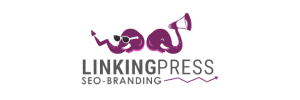Link building remains one of the most crucial elements of SEO. Quality backlinks can significantly boost your website’s authority, drive referral traffic, and improve your search engine rankings. However, effective link building requires a strategic approach, focusing on acquiring high-quality links from reputable sources. This article provides actionable tips to help you build a robust link profile and enhance your SEO efforts.
Understand the Importance of Link Quality
Before diving into specific link-building strategies, it’s essential to understand that not all links are created equal. Search engines like Google prioritize the quality of links over quantity. A few high-quality links from authoritative websites are far more valuable than numerous low-quality links from irrelevant or spammy sites.
High-quality links come from websites that are relevant to your industry, have high domain authority, and are trusted by users and search engines alike. These links signal to search engines that your content is credible and worthy of ranking higher in search results.
Create High-Quality, Link-Worthy Content
One of the most effective ways to attract quality backlinks is by creating content that others naturally want to link to. This means producing high-quality, valuable content that addresses the needs and interests of your target audience. Here are some content types that are particularly effective for link building:
- Original Research and Data: Conducting original research and publishing data-driven insights can make your content highly link-worthy. Other websites, especially those within your industry, are likely to reference and link to your research when writing related articles.
- In-Depth Guides and Tutorials: Comprehensive guides and how-to articles provide detailed information on specific topics, making them valuable resources for readers. These types of content are often linked to as authoritative references in other articles.
- Infographics and Visual Content: Infographics are visually appealing and easy to share, making them excellent for attracting backlinks. When creating infographics, ensure they are informative, well-designed, and relevant to your audience.
- Case Studies and Success Stories: Case studies that showcase real-world examples of how your product or service has solved a problem can attract links from industry publications, blogs, and news outlets.
Leverage Guest Blogging
Guest blogging is a tried-and-true link-building strategy that involves writing articles for other websites in your industry. In exchange for your valuable content, you can usually include a link back to your website in the author bio or within the article itself. Here’s how to effectively leverage guest blogging:
- Identify Relevant Websites: Look for websites in your niche that accept guest posts. These sites should have a good domain authority and a readership that aligns with your target audience.
- Pitch Compelling Topics: When reaching out to potential sites, pitch topics that are relevant, timely, and of interest to their audience. Your pitch should demonstrate how your content will provide value to their readers.
- Write High-Quality Content: Ensure that your guest posts are well-researched, well-written, and provide genuine value. High-quality content is more likely to be accepted and can lead to long-term relationships with the hosting site.
- Include Natural, Contextual Links: When including links back to your site, make sure they are relevant and fit naturally within the content. Avoid over-optimizing anchor text or including too many links, as this can come across as spammy.
Utilize Broken Link Building
Broken link building is a strategy that involves finding broken links on other websites and offering your content as a replacement. This approach is mutually beneficial, as it helps the website owner fix broken links while providing you with a valuable backlink. Here’s how to implement broken link building:
- Identify Broken Links: Use tools like Ahrefs, SEMrush, or Broken Link Checker to find broken links on websites within your niche. Look for broken links pointing to content similar to what you offer.
- Create or Repurpose Content: If you already have content that matches the broken link, great! If not, consider creating or repurposing content that would serve as a good replacement for the broken link.
- Reach Out to Webmasters: Contact the webmaster or content creator of the site with the broken link. Politely inform them of the broken link and suggest your content as a replacement. Be concise and professional in your outreach.
- Follow-up: If you don’t receive a response initially, don’t be afraid to send a polite follow-up email. Webmasters often appreciate the help in fixing broken links, and a gentle reminder can increase your chances of securing the backlink.
Engage in Digital PR and Outreach
Digital PR involves promoting your content through media outreach, influencer partnerships, and press releases. By getting your content featured in reputable publications or mentioned by influencers, you can acquire high-quality backlinks that boost your SEO. Here’s how to engage in effective digital PR:
- Build Relationships with Journalists and Bloggers: Start by building relationships with journalists, bloggers, and influencers in your industry. Engage with their content, share their work, and connect with them on social media to establish a rapport.
- Craft Compelling Press Releases: When you have newsworthy content, such as a product launch, research findings, or a major company update, create a press release and distribute it to relevant media outlets. Include links to your website to drive traffic and earn backlinks.
- Leverage Influencer Partnerships: Collaborate with influencers in your niche who can help promote your content. Influencers can amplify your reach and generate backlinks by sharing your content with their audience.
- Utilize Resource Pages: Many websites have resource pages that list helpful tools, articles, and guides. Reach out to these sites and suggest including your content on their resource page, providing a valuable backlink to your site.
Monitor and Analyze Your Link Building Efforts
To ensure the effectiveness of your link-building strategy, it’s important to monitor and analyze your efforts regularly. Use tools like Google Analytics, Ahrefs, or Moz to track your backlinks, referral traffic, and overall SEO performance. Here are some key metrics to monitor:
- Number of Backlinks: Track the number of backlinks your site has acquired over time. Monitor both the quantity and quality of these links to ensure they are contributing positively to your SEO.
- Domain Authority: Keep an eye on your site’s domain authority (DA), which reflects the overall strength of your backlink profile. A higher DA indicates a stronger ability to rank in search engine results.
- Referral Traffic: Analyze the amount of traffic coming from your backlinks. High-quality backlinks should drive targeted traffic to your site, leading to higher engagement and conversions.
- Anchor Text Distribution: Review the anchor text used in your backlinks to ensure it is diverse and natural. Over-optimization of anchor text can raise red flags with search engines and harm your SEO efforts.
Link Building, strategy and tactic
Effective link building requires a strategic approach that focuses on quality over quantity. By creating valuable, link-worthy content, leveraging guest blogging, utilizing broken link building, and engaging in digital PR, you can build a strong backlink profile that boosts your SEO and drives meaningful traffic to your website. Remember to monitor your efforts regularly and adjust your strategy as needed to achieve the best results. With persistence and the right approach, you can elevate your SEO performance and achieve long-term success.










